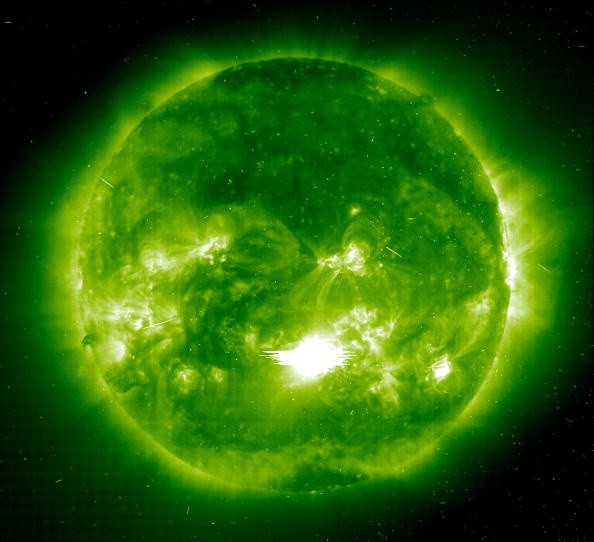A particularly strong solar storm hasn't hit Earth in over 160 years, though one got dangerously close in 2012. Solar storms, which are triggered by intense bursts of activity on the Sun, can destroy satellites and destabilize electrical grids across vast swaths of the Earth.
For example, a gigantic jet of plasma and magnetic field from the Sun is reported to have left telegraph poles sparking throughout Europe and North America when the infamous Carrington Event struck in 1859.
Scientists in the United States fear that if something similar happened now, the catastrophic event would bring the entire country to its knees.
"Only two natural disasters have the potential to harm the entire United States," said Gabor Toth, a University of Michigan professor of Climate and Space Sciences and Engineering. "One is a pandemic, and the other is a terrible case of space weather," says the professor.
Solar Storm Intensity

Although solar storms occur frequently, they are rarely intense enough to destroy electronics. Minor G1 class storms, according to the US Space Weather Prediction Center (SWPC), may cause minor disruptions to satellite operations. Storms and entire power systems risk collapse at the end of the scale - Extreme G5.
Related Article : Expert Warns 'Situation Worse than Covid' if Government Ignores Solar Flare Defense
Carrington Event (1859) and Quebec Power Outage (1989)
Earth was not nearly as technologically evolved as today when the Carrington Event occurred in 1859. For another 60 years or so, satellites enabling high-speed communications did not circle the globe, and power was not a common commodity.
A strong incident of geomagnetic instability caused a nine-hour outage of Hydro-electrical Québec's grid in 1989, giving the Earth a taste of what may happen during such an event. The outage left millions of Canadians without electricity.
"We have all these technological assets that are at risk," Professor Toth stated. If a catastrophic disaster like the one in 1859 occurred again, the event would destroy the power grid, satellite, and communications systems - the stakes are far higher."
Dangers of Intense Solar Activity
In response to the dangers presented by rising solar activity, scientists have begun developing new forecasting models for dangerous space weather. Last year, NASA and the National Science Foundation collaborated to establish the Space Weather with Quantified Uncertainties (SWQU) project (NSF).
A forecasting model developed by Professor Toth and his teams at the University of Michigan is one of the potential answers to the problem. Since February of this year, the US National Oceanic and Atmospheric Administration (NOAA) has been using an improved model version.
The so-called Geospace Model Version was upgraded to 2.0, replacing the 1.5 model that has been in use since 2017.
Creating Simulation Models

According to the tool, interactions with solar winds - a stream of charged particles escaping from the Sun and out into space - produce disturbances on the ground. For example, solar winds colliding with the magnetosphere, the region of space dominated by the Earth's magnetic field, can destroy power grids, disrupt radio communications, and knock communication satellites out.
"We're currently using data from a satellite detecting plasma properties one million miles away from the Earth," Professor Toth remarked.
The researchers are especially interested in coronal mass ejections, or CMEs, enormous plasma and magnetic field expulsions from the Sun's corona. The Carrington Event is thought to have been caused by a powerful CME.
"That happens early on the Sun," Professor Toth noted. So we can run a model from there to anticipate the arrival time and impact of magnetic events." The expert and his colleagues run the forecasting model on the Frontera supercomputer at the Texas Advanced Computing Center in Austin.
The researchers can now run their models 10 to 100 times faster because of new algorithms and a powerful supercomputer. "People had attempted it before and failed," Professor Toth stated. But we managed to make it work. "By designing smart approximations and algorithms, we go a million times faster than brute-force simulations."
For more cosmic news, don't forget to follow Nature World News!
© 2025 NatureWorldNews.com All rights reserved. Do not reproduce without permission.





